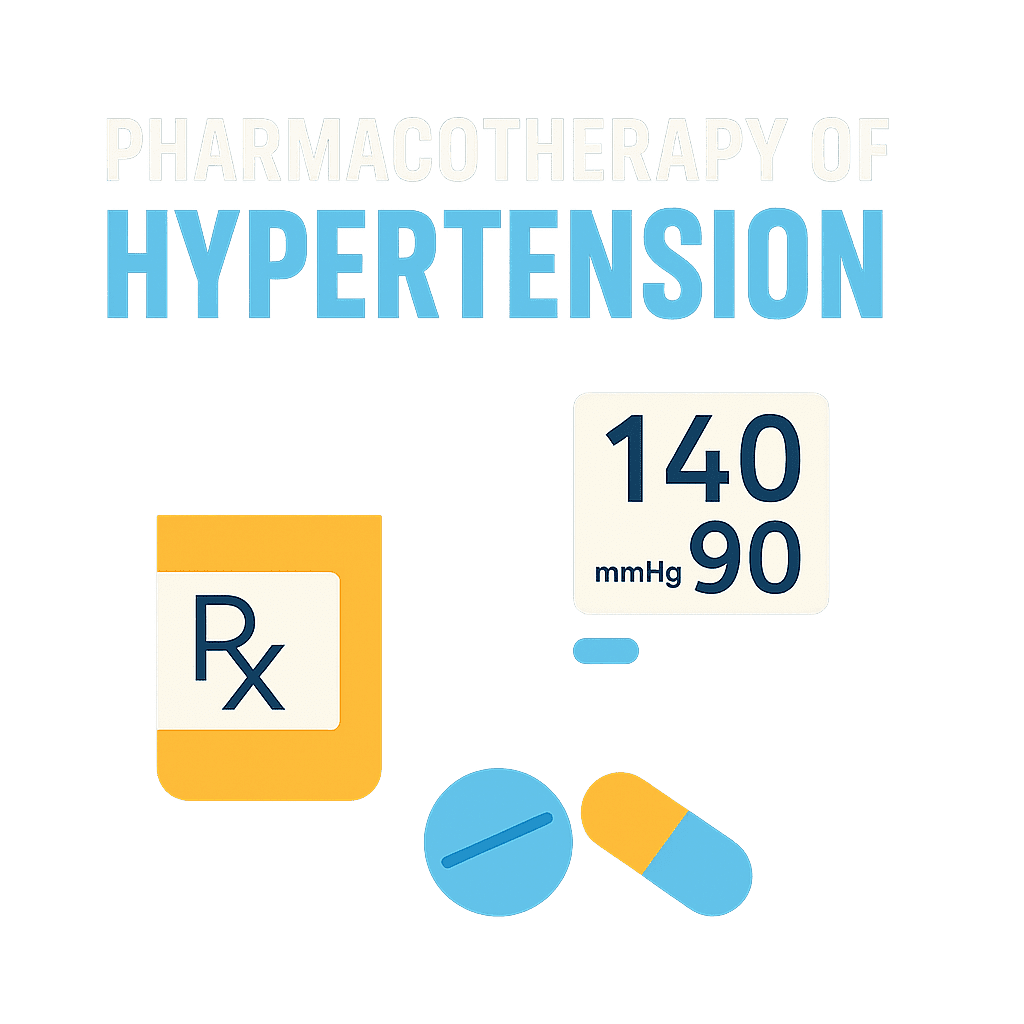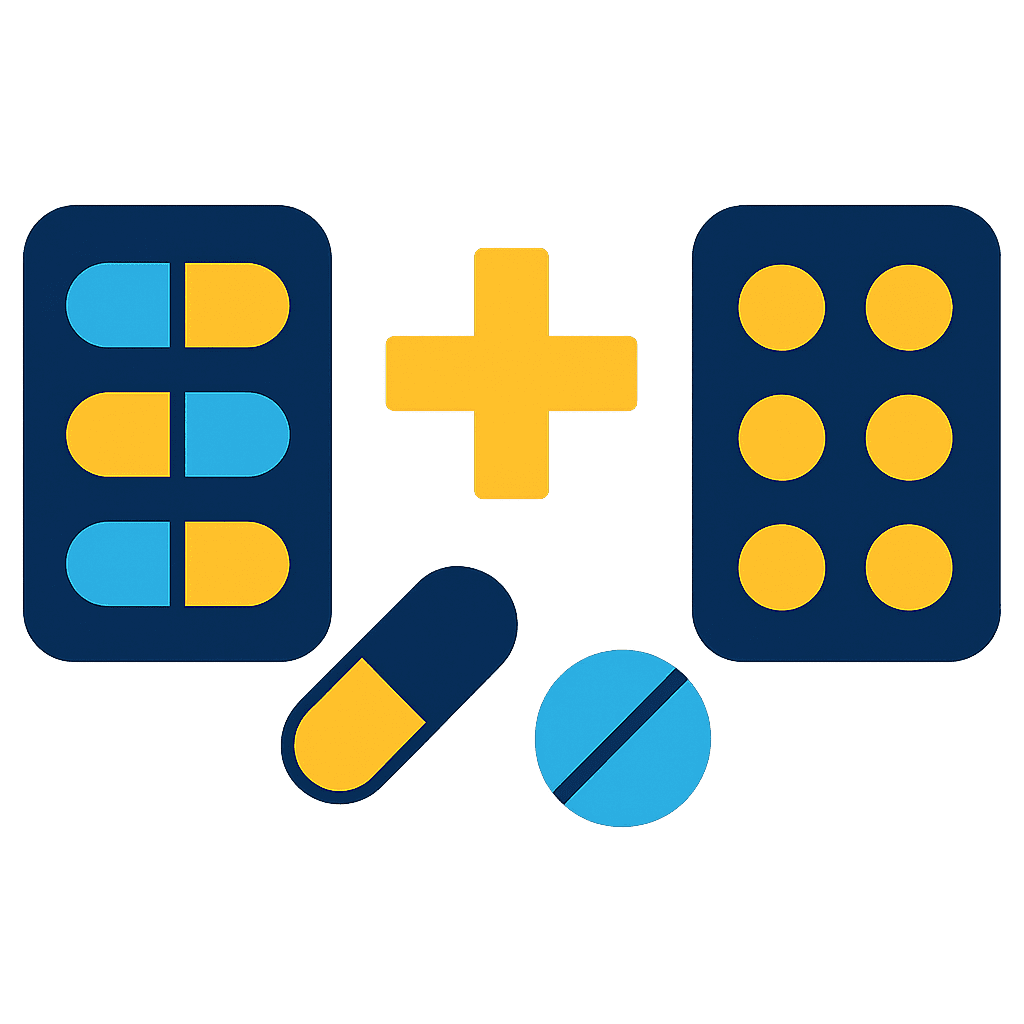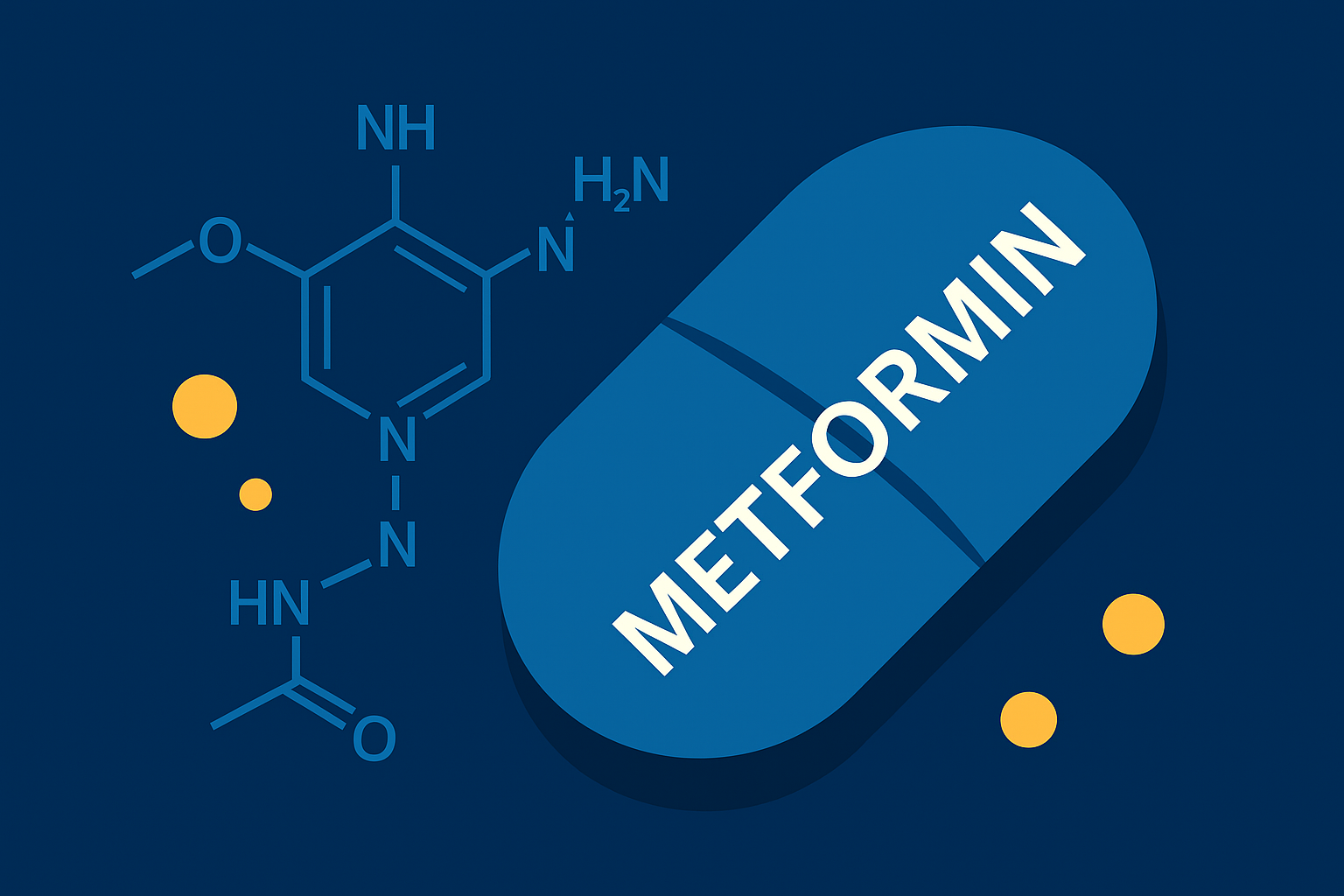Hypertension is one of the most common chronic conditions worldwide and a leading cause of cardiovascular disease, stroke, and kidney failure. Therefore, Effective pharmacotherapy of hypertension significantly reduces morbidity and mortality, making it a cornerstone of modern clinical practice. So, For pharmacists, mastering the management of high blood pressure is crucial for both patient care and exam preparation (e.g., OPRA and EE exams).
Blood Pressure Targets
Most guidelines recommend initiating pharmacotherapy when:
≥140/90 mmHg in the general adult population.
≥130/80 mmHg in patients with diabetes, chronic kidney disease, or cardiovascular risk.
So, The therapeutic goal is usually <140/90 mmHg, with tighter control (<130/80 mmHg) in high-risk groups if tolerated.

First-Line Antihypertensive Drug Classes
1. Thiazide and Thiazide-Like Diuretics
Examples: Hydrochlorothiazide, Indapamide, Chlorthalidone.
Mechanism: Promote sodium and water excretion, lowering blood volume.
Clinical pearl: Effective in elderly and Black patients; monitor potassium and sodium.
2. Angiotensin-Converting Enzyme Inhibitors (ACEIs)
Examples: Lisinopril, Ramipril, Enalapril.
Mechanism: Block Ag II formation, reducing vasoconstriction and aldosterone activity.
Key considerations: Protective in diabetes and HF; may cause cough or angioedema.
3. Angiotensin II Receptor Blockers (ARBs)
Examples: Losartan, Valsartan, Candesartan.
Mechanism: Block angiotensin II receptors.
Key considerations: Similar benefits to ACEIs with fewer side effects; preferred if ACEI not tolerated.
4. Calcium Channel Blockers (CCBs)
Examples: Amlodipine, Felodipine, Diltiazem.
Mechanism: Inhibit calcium influx into vascular smooth muscle → vasodilation.
Key considerations: Excellent in elderly patients; may cause ankle edema.
According to American Heart Association
Combination Therapy
Most patients need two or more agents for optimal blood pressure control. Preferred combinations include:
ACEI/ARB + CCB
ACEI/ARB + Thiazide diuretic
So, Fixed-dose combination pills improve adherence and simplify therapy.

Pharmacotherapy of hypertension in Special Populations
Elderly patients: Start low, go slow; thiazides and CCBs often preferred.
Pregnancy: Safe options include labetalol, methyldopa, nifedipine. Avoid ACEIs and ARBs.
Diabetes and CKD: ACEIs/ARBs are first choice due to kidney protection.
Heart failure: ACEIs/ARBs, beta-blockers, and MRAs reduce morbidity and mortality.
Resistant Hypertension
Defined as uncontrolled BP despite ≥3 agents (including a diuretic).
Spironolactone is effective as a fourth-line option.
Evaluate adherence, lifestyle, and secondary causes such as renal disease or sleep apnea.
The Pharmacist’s Role in Hypertension Management
Pharmacists play an essential role in ensuring successful treatment outcomes:
Medication counseling: Improve adherence, explain side effects.
Monitoring: Blood pressure, electrolytes, and renal function.
Lifestyle advice: Salt reduction, weight loss, smoking cessation.
Clinical vigilance: Identify hypertensive crises requiring urgent care.
Conclusion for Pharmacotherapy of hypertension
The pharmacotherapy of hypertension requires patient-centered drug selection, adherence strategies, and close monitoring. Therefore, Pharmacists are uniquely positioned to optimize outcomes, support safe medicine use, and prepare patients for long-term success. For pharmacy exam candidates, hypertension remains a high-yield therapeutic area—mastery is essential for the OPRA and EE exams.





